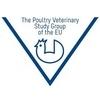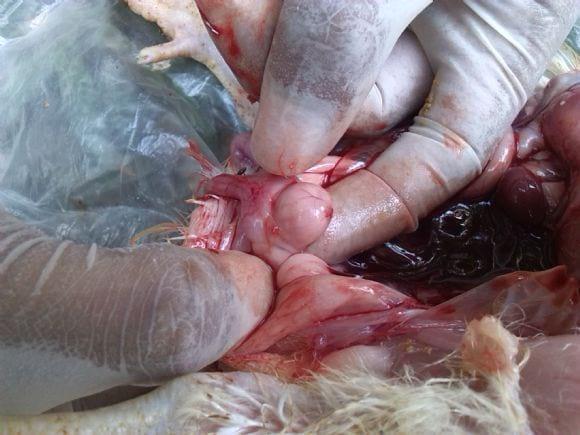Explore all the information on
Viral diseases in poultry
If you ask poultry producers what damage viruses can do to their business, they will understandably think mostly about major diseases such as avian influenza, Gumboro disease or respiratory infections such as Infectious Bronchitis virus. However, this is merely the tip of the iceberg. Viral challenges can be the triggers for a whole range of problems which may never even appear as clinical disease but can have an even more devastating effect on overall flock performance, production and profits. They can affect one or more of the birds’ body systems, the most significant of which are the respiratory tract (lungs and air sacs), the skeletal system (bones and joints) or the intestinal tract (affecting gut function). Although other factors such as environment, nutrition and management play an important role in the full expression of diseases affecting these systems, the most significant underlying trigger is usually an infectious agent, and the most potent of these are undoubtedly viruses.
1. Introduction Newcastle disease (ND) is a highly contagious avian disease with a significant impact on global poultry production. ND is caused by the Newcastle disease virus (NDV), formerly known as Avian orthoavulavirus 1 (AOAV-1), belonging to the family Paramyxoviridae (https://talk.ictvonline.org/taxonomy/ accessed on 20 October 2021). The genome of NDV is single-stranded, non-segmented, negative-sense RNA encoding six structural proteins: nucleocapsid protein (NP),...
Comments : 0
Recommendations: 0
Infectious laryngotracheitis is an avian respiratory disease which is caused by infectious laryngotracheitis virus (ILTV), and clinical signs vary from coughing, conjunctivitis, and gasping to expectoration of bloody mucus and death (1). Whereas genomic database analysis allowed the identification of an ILTV field strain in Australia as a causative agent of outbreaks as a result of recombination between attenuated vaccine viruses (2), genomic sequence data from viral outbreaks in South...
Comments : 1
Recommendations: 1
I would be grateful if somebody tell me if subclinical infection of respiratory diseases -ND,IB,ART. and other subclinical infections have an impact on performance of chickens . How much is drop production and hatchability? To how much extent have the progeny any abnormalities?
thanks and regards...
Comments : 0
Recommendations: 1
1. Introduction Among viral diseases affecting poultry production Newcastle disease (ND) is one of the most common and serious one [1]. It is caused by viruses of genus Orthoavulavirus, Avian orthoavulavirus 1 species [2] formerly designated as Avian avulavirus 1, that are commonly known as Avian paramyxovirus 1 (APMV 1) or Newcastle disease viruses (NDV). The virulent forms of NDV cause a devastating disease of poultry throughout Asia, Africa, the Middle East, and Central and...
Comments : 0
Recommendations: 0
Background: FAdVs are widely distributed, and some species are associated with important poultry diseases, representing current threats of serious economic losses for the aviculture industry. Some of the diseases include the Inclusion body hepatitis (IBH) related with FAdV-C and D infections, hepatitis-hydropericardium syndrome (HHS) related with FAdV-C infections [1,2], gizzard erosion (GE) related with FAdV-A infections [3-6] among others. The family Adenoviridae is divided...
Comments : 0
Recommendations: 0
I. INTRODUCTION Infectious laryngotracheitis (ILT) is an important respiratory disease of chickens caused by ILT virus (ILTV, Gallid herpesvirus 1) that infects the upper respiratory tract and conjunctiva resulting in high morbidity and sometimes mortality (García et al., 2013). Vaccination with live attenuated vaccines administered by eye drop is generally effective: however for commercial meat chickens mass vaccination in drinking water via nipple drinkers is generally...
Comments : 1
Recommendations: 0
Dear Poultry Professionals, I would like to know about occurrence of Inclusion Body Hepatitis (IBH) in Commercial Layers. The Disease has been reported in broilers, but can layer birds also be affected? Vaccination at what age can be helpful if such occurrence is seen in the field? Kindly let me know about the experiences & the treatments followed specifically in Layers, if any outbreak has been reported. ...
Comments : 15
Recommendations: 0
Dr. Mauricio Coppo from the University of Melbourne summarizes his talk about the behavior of the ILT virus and generation of new challenges in the poultry industry. ...
Comments : 1
Recommendations: 0
Avian Leukosis Complex (ALC) Avian leucosis viruses are grouped together because they share important characteristics. They produce variety of transmissible benign and malignant neoplasm. The most common is lymphoid leucosis. Etiology ALC is caused by RNA oncogenic virus type C. Ten years ago, researchers at the institute for animal health at Compton in UK isolated a new type of ALV from meat type breeding chickens in UK. This new virus is named ALV – J....
Comments : 1
Recommendations: 0
by Sam Shafer
Every year, waterfowl producers around the world suffer economic losses due to duck enteritis virus (DEV), also called “duck plague.” This virus is a member of the alphaherpesvirinae subfamily, and it causes severe illness and high mortality in ducks, geese, swans and other birds.
DEV appears to rely on a protein called pUL13 to infect host cells, but little is known about how this protein works.
In a new study, published...
Comments : 0
Recommendations: 0
.jpg&w=3840&q=75)

Introducing Afla-V ONE: Safe, Sustainable Aflatoxin Detection for Complete Feeds and Pet Foods
Suggested link
Intro by Dr. Stephen Collett: Vectored vaccines have from their conception been promoted as the ultimate answer to the problems encountered when using immunization to reduce the impact of disease challenge on flock health and productivity. This interesting and thorough but succinct mini-review shows that the quest has unfortunately proven more complex than initially anticipated. Only recently have scientists been able to provide the field veterinarian and...
Comments : 3
Recommendations: 0
There are two schools of thoughts for treating a flock affected by viral diseases like IB, AI, ND & IBD. Some say we should immediately use antibiotic to counter any secondary bacterial infection in the process. And some say we should give just supportive & symptomatic therapy to flock in case of viral infection i.e bronchodilator, antipyretic, antioxidants/immunity modulators & liver tonics. I would like an opinion of some senior vets on this issue. ...
Comments : 1
Recommendations: 1
Now-a-days there are prevalence of FAdv serotype 4 in some countries as hepatitis hydropricqrdium syndrome (HHS). What changes we can do in feed formulation to decrease its detrimental effects in broiler farms? ...
Comments : 0
Recommendations: 0
17 days old broiler bird infected with IBD, Characterized by Swollen bursa and hemorrhage on thigh and breast muscle....
Comments : 0
Recommendations: 0
Haemorrhagic enteritis virus (HEV) is an immunosuppressive adenovirus that causes haemorrhagic enteritis in young turkey poults with increased incidence of secondary bacterial infections, such as colibacillosis (Pierson and Fitzgerald, 2013). Worldwide live vaccines propagated in cell culture or turkeys (crude spleen homogenates) are used to prevent the disease. In Australia, there is currently no licensed HEV vaccine due to inability to import the only cell line known to support HEV...
Comments : 0
Recommendations: 0
During routine diagnosis in my Lab, I found this case of ILT in non vaccinated 46 weeks old layers in Karachi, Pakistan. Dr. M. Akram, Consultant Microbiologist, Micro Laboratories. ...
Comments : 5
Recommendations: 0
I. INTRODUCTION Field success of mass ILT vaccination in young meat chickens is often accompanied by reports of vaccine reactions, often rolling through the flock for some time, and even apparent vaccination failure with wild strain outbreaks in vaccinated flocks. This is in spite of laboratory challenge studies often describing good protection of vaccines against an artificial challenge with the field outbreak strain (Arzey and Arzey, 1993). Laboratory studies (Rodrigues-Avila...
Comments : 0
Recommendations: 0
I would be grateful if somebody tell me how can I interpret NDV Elisa report that showed normal antibody mean titer -baseline mean titer -while the %CV is not as expected -bassline %CV - being very low 4 or 5 up to 6 . ...
Comments : 0
Recommendations: 0
Infectious laryngotracheitis (ILT) is an ongoing problem in meat chickens in important production areas of Australia. In response to outbreaks, live vaccines are typically administered at 7-14 days of age in drinking water via nipple drinkers which may not provide optimal contact with susceptible tissues. The efficacy of vaccination is not routinely assessed. As part of a series of experiments investigating the kinetics of ILT virus (ILTV) in meat chickens after water vaccination via nipple...
Comments : 0
Recommendations: 1


.jpg&w=3840&q=75)










.jpg&w=3840&q=75)





















